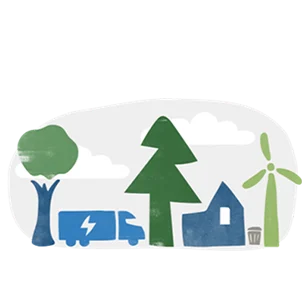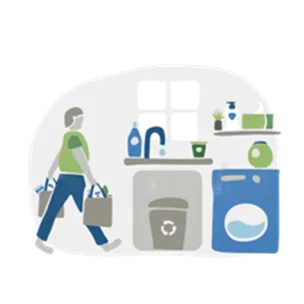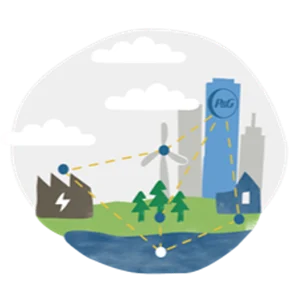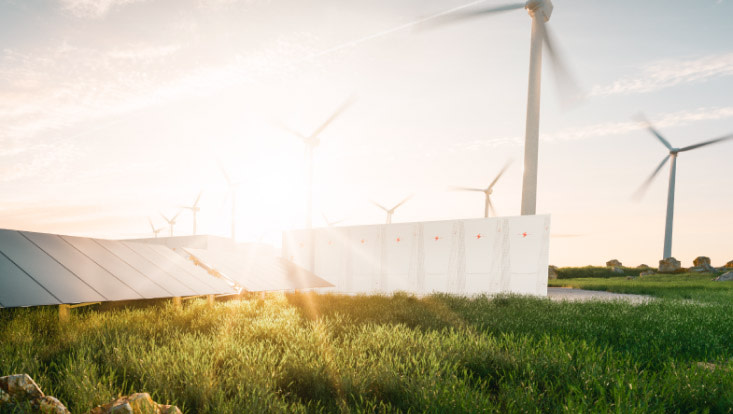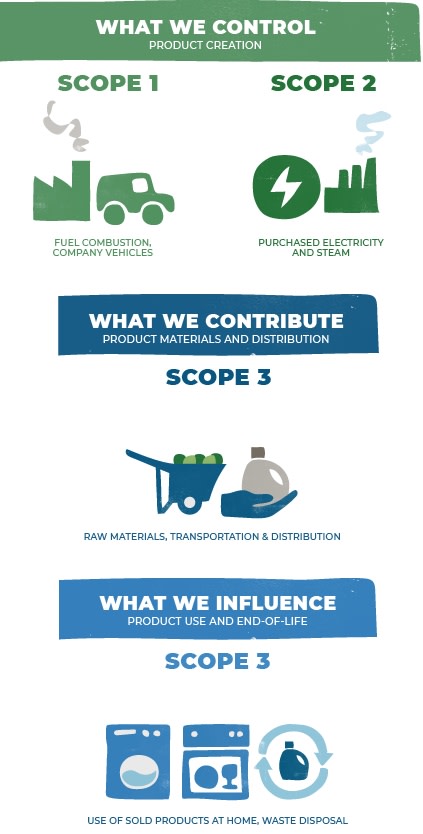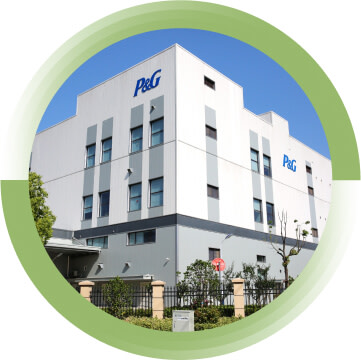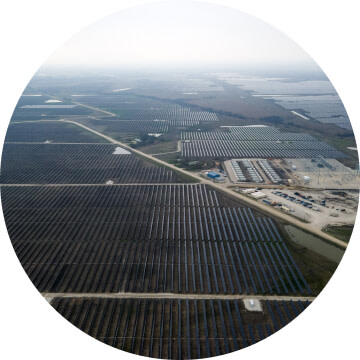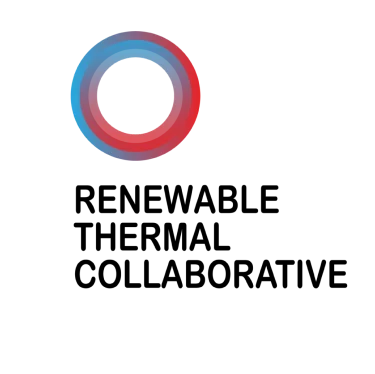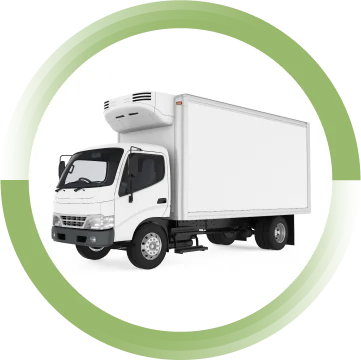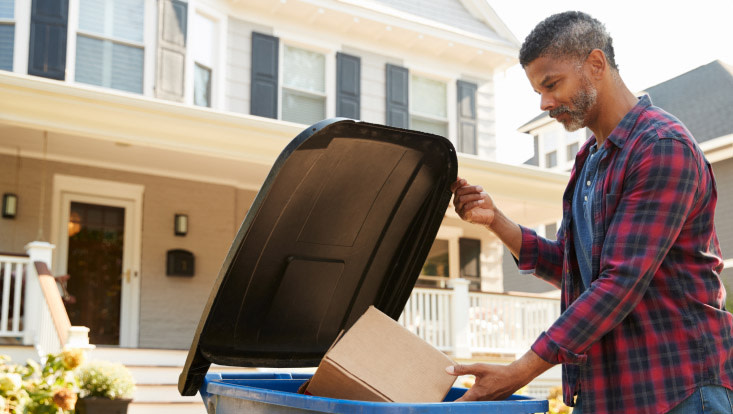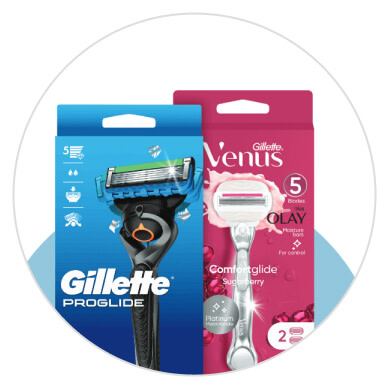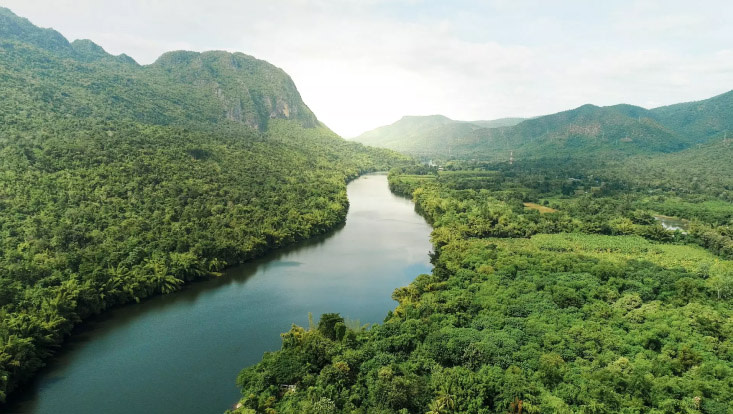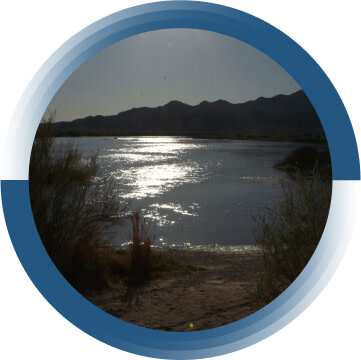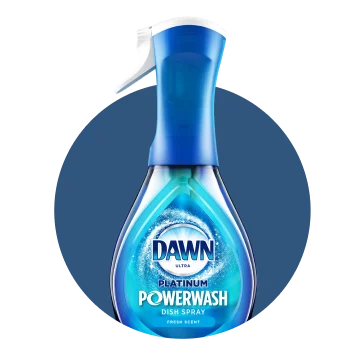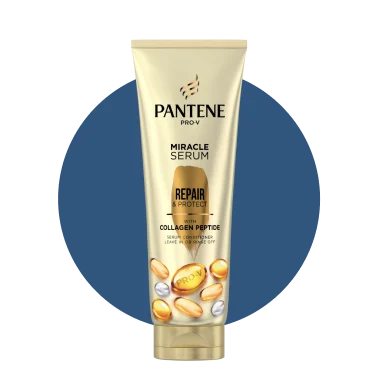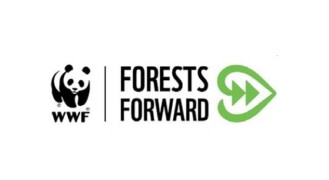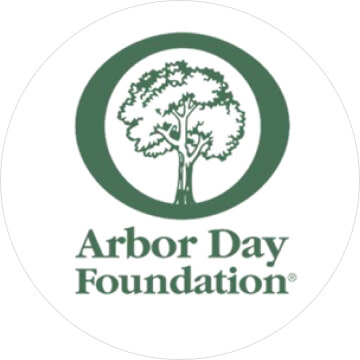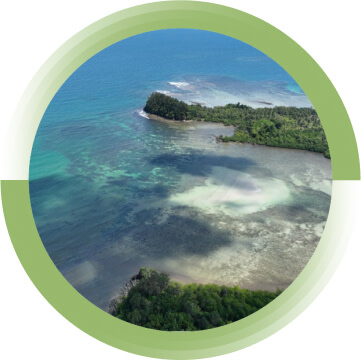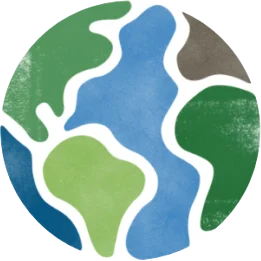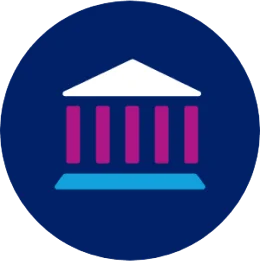Environmental
Sustainability
Environmental sustainability is embedded in how we do business.
Learn how we are delivering impact at three levels - reducing our own impact, enabling people to reduce their impact, and scaling industry-wide solutions that reduce environmental impact.

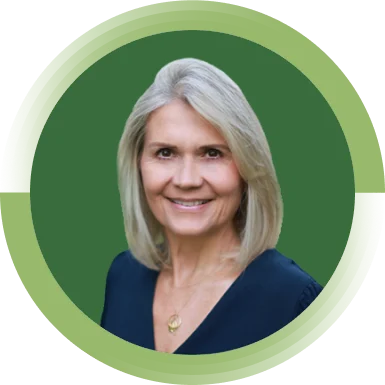
Chief Sustainability Officer
“We are committed to improving people’s lives with innovation that delivers superior performance and is more sustainable. We are working across Climate, Waste, Water and Nature to reduce our footprint in our operations, empower people to reduce their footprint when they use our products, and help society solve some of the global challenges where we can make the biggest difference.
Our employees also play a key role in ensuring sustainability is integrated into their daily work. Their commitment is fundamental to our journey toward a more sustainable future.”
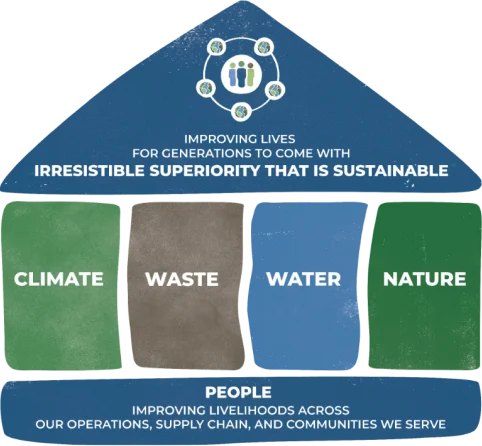

P&G’s Ambition 2030 supports our brands’ ability to provide irresistible superiority that is sustainable to improve lives now and for generations to come. It is built on the strength of four pillars – Climate, Waste, Water and Nature – where we can make the biggest difference for the planet and our business. Its foundation is improving the livelihoods of people across our operations, supply chain and the communities we serve.
We are setting a new standard of superiority, one where consumers’ sustainability expectations are considered from the very start of the innovation journey. P&G focuses on consumer needs, and sustainability considerations are incorporated into every aspect of our approach to innovate for irresistible superiority.
We are working across Climate, Waste, Water and Nature to reduce our footprint in our operations, empower people to reduce their footprint when they use our products, and scale industry-wide solutions by being a catalyst for cross-value chain collaboration. We cannot achieve these goals alone. This requires collaboration between the private, nonprofit, and public sectors and involves every aspect of our business.
To learn more about our projects and partnerships around the world, please explore this report further and visit Mapping Our Impact.
![]() CLIMATE
CLIMATE

Watch to learn more about P&G’s efforts to reach net zero by 2040.
P&G’s ambition is to reach net zero greenhouse gas (GHG) emissions across our supply chain and operations – from raw material to retailer – by 2040. Our climate journey began over a decade ago with goals at our own manufacturing facilities. Since then, we have expanded and accelerated our efforts to address GHG emissions across the life cycle of our products, and within our operations and supply chain.
Our focus is on significantly reducing absolute GHG emissions in our total operational and supply chain emissions to reach our net zero ambition. We will balance any remaining emissions from our operations and supply chain by advancing natural or technical solutions that remove an equivalent amount of GHG emissions from the atmosphere. To help pace our progress toward 2040, we have established near-term science-based targets for 2030.
Since P&G established our first goal to reduce GHG emissions from our manufacturing facilities over a decade ago, we have continued to raise the bar on climate action by exceeding our emissions targets for Scope 1 and 2 ahead of schedule. This year we are increasing our goals for GHG emissions reductions at our facilities. We now aim to reduce our Scope 1 and 2 emissions by 65% by 2030 versus a 2010 baseline – an increase from our previous 2030 goal of 50%. This new science-based target is aligned to a 1.5 degrees Celsius climate scenario.
| 2030 Goal | Progress |
|---|---|
| Reduce Scope 1 and 2 GHG emissions by 65% (vs. 2010 baseline) | 58% reduction |
| Purchase 100% renewable electricity globally | >99% renewable electricity globally |
| Energy (gigajoules x 1,000) | Total | ||
|---|---|---|---|
| 2023 | 2022 | 2021 | |
| Energy Consumption | 60,855 | 62,244 | 63,973 |
| Greenhouse Gas (GHG) (metric tons x 1,000) | |||
| Total GHG Emissions* | 2,253 | 2,309 | 2,398 |
| Scope 1 – Direct GHG Emissions | 2,123 | 2,158 | 2,238 |
| Scope 2 – Indirect GHG Emissions** | 130 | 151 | 160 |
| Biogenic GHG Emissions*** | 45 | 53 | 50 |
|
*Total GHG emissions = Scope 1 + Scope 2. Scope 2 emissions calculated using a market-based method. **Market-based Scope 2 GHG emissions. Note: Location-based Scope 2 emissions in 2023 were 2,275 metric tons (x 1,000). ***P&G reports biogenic emissions separately from Scope 1 emissions. This includes biogenic CO2 from the use of biogas and biomethane delivered via the natural gas pipeline where 3rd party certified energy attribute certificates are provided by the supplier. |
|||
| Note: The above table summarizes environmental statistics for our manufacturing operations, technical centers, and distribution centers. Numbers do not include production from contract manufacturing operations. | |||
Our greenhouse gas emissions data has been verified by an independent third party, Lloyd’s Register Quality Assurance (LRQA).
TRANSPORTATION
This past year we increased staffing and capability across regions and implemented advanced analytics tools to better understand details of emissions across individual freight lanes and transportation modes. We anticipate this will enable us to accelerate the rollout of additional emissions-saving efforts moving forward.
Operations remain challenging due to disturbances across supply chains in many parts of the world causing headwinds to our efforts. Undeterred by these challenges, we will continue to partner and collaborate with carriers, retailers, and the broader transportation industry to scale new ways of delivering products to the consumer with a reduced carbon intensity.
| 2030 Goal | Progress |
|---|---|
| Reduce global upstream finished product freight emissions intensity by 50% (vs. 2020 baseline) | 4% increase |
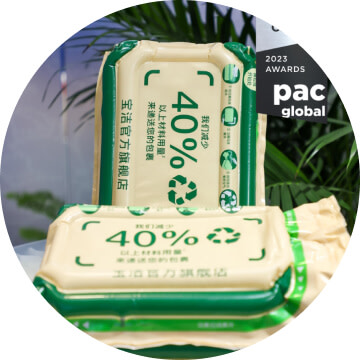
Improving E-commerce Packaging With Lighter Material
Air Capsule is a consumer preferred package solution that enables transportation efficiencies. It starts as a flat envelope during transport and transforms into an inflated rigid 3D structure to protect products during shipment. This single component package used in China is 40% lighter and 75% less bulky than corrugated flat boxes. This innovative package is made with a recyclable polyethylene film while the multiple inflatable chambers give structural rigidity and puncture-surviving strength that helps secure the product during shipping. And people can use a tear tab to open it without needing to use a knife or scissors.
The packaging is a 2022 Platinum Winner at the Dow Packaging Awards and was named E-commerce Best in Class at the 2023 PAC Global Awards.
Electrifying Our Distribution for Efficiency
P&G is partnering with transportation carriers to introduce battery-powered electric vehicles into our operations and our delivery lanes to major U.S. retailers. Trailer loads moving within our West Coast Fulfillment Center yard in Southern California are now electrified, and we have also begun using electric trucks to deliver goods to our customer distribution centers.
SUPPLY CHAIN
We’ve set a goal to reduce Scope 3 emissions from the supply of materials that are necessary for P&G finished products – what we refer to as our supply chain – by 40% per unit of production by 2030 (versus a 2020 baseline). For fiscal year 2023, we focused our reporting on three priority categories that account for more than 85% of our total supply chain GHG emissions (Fabric Care, Beauty Care and Baby Care). We estimate that we have achieved an approximately 8% reduction per unit of production for these priority categories. Our calculations were based on a combination of both primary data (e.g., P&G material use and production volumes) and secondary data (e.g., material specific emission factors from lifecycle inventory databases).
We plan to continue pursuing a portfolio of strategies to reduce our supply chain emissions, including material efficiency, use of bio-based and recycled materials, increased renewable energy use, and exploring potential applications of carbon capture and storage. We also plan to expand reporting across additional P&G categories and integrate more supplier data into our measurement systems.
| 2030 Goal | Progress |
|---|---|
| Reduce supply chain emissions by 40% per unit of production (vs. 2020 baseline) | ~8% reduction within three priority categories (Fabric Care, Beauty Care, Baby Care) that account for 85% of our total supply chain GHG emissions baseline |
| Note: We define the scope of this supply chain goal as our purchase of raw and packaging materials, intermediates, storeroom materials and finished products that we buy externally for P&G products sold. | |
WORKING TOGETHER TO ACHIEVE REDUCTION TARGETS
We understand that the only way we can succeed in achieving our supply chain emissions reduction goal is by working together across our supply chain. Over the past two years, P&G has been working closely with our suppliers to further enable progress on GHG emissions reduction. Through this dialogue, we have identified challenges and opportunities across our supply base and launched our P&G Supplier GHG reduction playbook to clarify expectations and help our suppliers in removing roadblocks toward their own climate journeys.
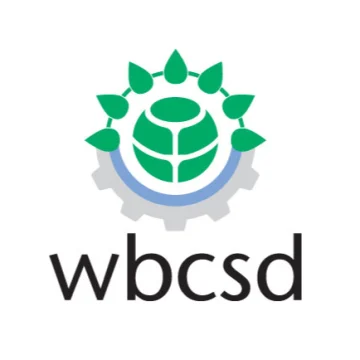
Synchronizing and Tracking Progress Collectively- WBCSD-PACT Program
We are currently collecting data from suppliers to refine our GHG baseline and track progress as an important step in reducing our supply chain GHG emissions. In parallel, we are piloting a digital solution to collect carbon footprints per material. In the future, we plan to scale up to more suppliers to track our purchased goods’ carbon footprint reduction.
The Partnership for Carbon Transparency seeks to accelerate decarbonization through data transparency of emissions in the value chain and is hosted by the World Business Council for Sustainable Development. P&G is participating in this synchronized effort across value chains, industry boundaries and technology. The objective is to enable a trusted and holistic foundation for measurement.
Collaboration across the private, nonprofit and public sectors is important to help enable systems-level solutions, learning from others and sharing our successes along the way.
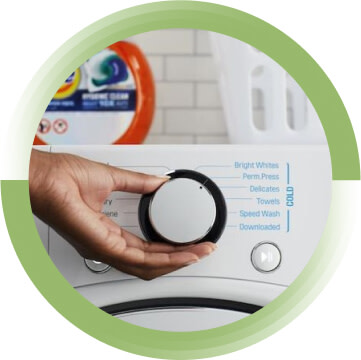
Tide and WWF Work to Make Washing in Cold the Next Big Eco Habit
Did you know that washing on cold saves up to 90% of energy8 in every wash cycle? That’s why Tide and World Wildlife Fund have joined forces to help establish washing laundry in cold water as the accepted routine for consumers.
Through partnerships, Tide is continuing to educate and encourage consumers to choose cold water when washing laundry. The brand estimates that a decade of Americans washing the majority (3 in 4) of their loads in cold would save enough electricity to power all of New York City and San Francisco for over a year.9 Tide is working to achieve an ambition of 75% of laundry loads washed on cold by 2030 – 2 million tons of CO2 have been avoided in the first two years from these efforts.
8On average when switching from hot to cold water
9According to reported city-wide annual electricity usage by New York Building Congress and the California Energy Commission
Tide’s ambition to get 3 of 4 loads done in cold in the U.S. and Canada combined with Ariel’s efforts to lower average wash temperatures in Europe by 5° C is expected to help avoid more than 27 million tons of carbon emissions by 203010
10Based on expected cumulative GHG emissions from 2020 – 2030
Simplified LCA of Laundry Detergents1
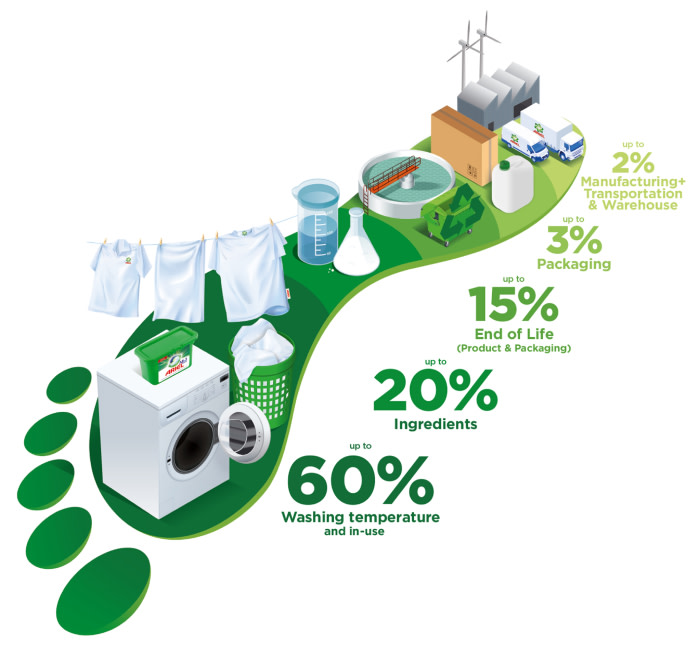
1 Simplified LCA showing European average
![]() WASTE
WASTE

P&G’s aim is to create a more circular value chain where material is continually recycled and remade to remain in use instead of becoming waste.
Watch how circularity helps build value.
P&G provides everyday products of superior quality and value to people around the world. Product packaging materials like plastic are useful in providing product protection and a lighter weight to lower GHG emissions during transportation.
We believe we can unlock more worth from packaging materials long after their first use. P&G is teaming up with industry coalitions and nonprofits to invent and find scalable solutions to reduce waste and reuse packaging and materials.
To deliver progress toward our plastic packaging goals, we continue to increase use of recycled plastic, use more lightweight designs, and replace plastic with other renewable materials (such as paper and bio-based plastics).
| 2030 Goal | Progress |
|---|---|
| 100% of our consumer packaging will be designed to be recyclable or reusable | 78% of our consumer packaging is designed to be recyclable or reusable |
| Reduce our use of virgin petroleum plastic in our consumer packaging by 50% per unit of production (vs. 2017 baseline) | 13% reduction |
| NOTE: Fiscal year progress for packaging data uses the time period from April 1, 2022 – March 31, 2023. |
|
We have made significant progress since declaring our goal that 100% of our consumer packaging will be designed to be recyclable or reusable. While our reported results of 78% this year are similar to last year, we are currently scaling new packaging innovations across several platforms that we anticipate will accelerate progress in the coming years.
P&G considers packaging to be recyclable if there is a recycling system operational at scale with viable collection, recovery, processing and end markets in place for the material and packaging format in at least one geography. We do not consider waste to energy and conversion to fuels as suitable end markets.
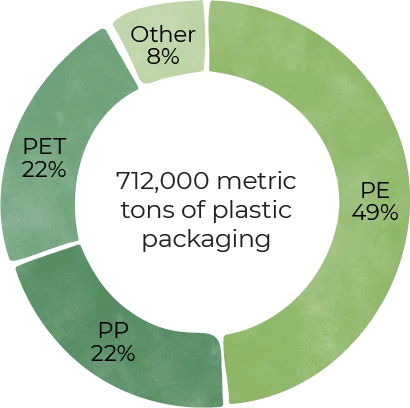
Types of Resin Used in Consumer Packaging
Numbers do not sum to 100% due to rounding
PP= Polypropylene
PET= Polyethylene Terephthalate
PE = Polyethylene
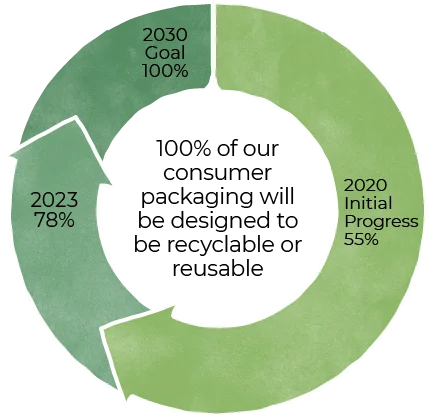
Progress Towards Goal
14% of our resins (or about 101,000 metric tons) came from recycled sources in 2023.
DESIGNING AWARD-WINNING SUSTAINABLE PACKAGING
Packaging plays an essential role in protecting, shipping and using our products. That’s why we’ve set ambitious goals to reduce waste and drive greater circularity of our packaging at end-of-product life. Our teams of designers, material scientists and innovators work together to create new packaging solutions to reduce plastic, create transportation efficiencies and reuse materials, all while providing a pleasant, positive usage experience.
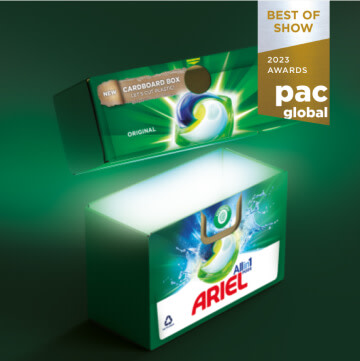
Detergent Packaging Featuring Zero Plastic
Our Ariel laundry capsules sold in Europe feature patent-pending cardboard packaging which is made with FSC certified materials and a minimum of 70% recycled fibers. The package is fully recyclable in municipal paper collection streams and can help reduce plastic waste. Plus, its size allows for more products per shipping pallet – reducing the number of trucks used to transport Ariel laundry capsules within P&G facilities and decreasing the product’s overall transportation energy footprint.
The box earned the 2022 Dow Awards Diamond Award and Best in Show at the 2023 PAC Global Awards.
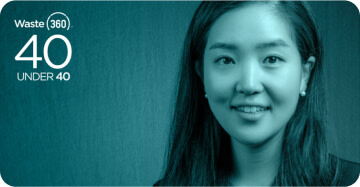
From Home Care Engineer to Waste 360’s 40 Under 40 Winner
It’s not just our packaging that is award-winning; our people are too. Innovative packaging work on P&G Home Care products led our surface care packaging director to be recognized as one of Waste 360’s 40 under 40.
“That really made me proud that consumers get the product and package benefits that I’ve worked on.”
– Vicki, R&D
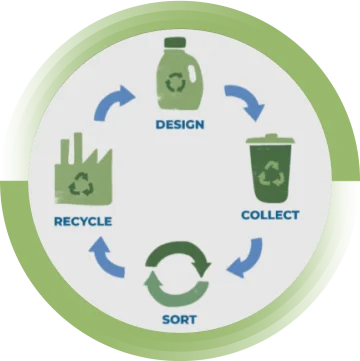
We believe partnerships are critical to transform how packaging materials are used, reused and renewed in a circular economy and are essential to drive positive impact at scale.
Design: We’re designing consumer packing to be recycled and sourcing recycled materials for use in our designs to enable circularity.
Collect: We’re partnering to enable more people to have equitable access to recycling collection systems.
-
Ongoing funding to The Recycling Partnership and Closed Loop Partners, who are helping improve recycling access and engagement to recycle more types of materials in the U.S.
-
Startup funding that includes the Southeast Asia and Latin America regions with developing infrastructure, through Circulate Capital’s Ocean Fund and Delterra. The Alliance to End Plastic Waste is also helping advance a circular economy in developing markets and other regions worldwide.
Sort: We’re collaborating across the industry to scale new digital watermarks on packaging to better separate and recover higher-quality plastics back into the supply chain. In Europe, this P&G-born idea to get recyclables sorted faster and with more accuracy grew to include 160+ companies in the HolyGrail 2.0 pilots.
Recycle: We’re addressing the demand for high-quality, recycled content to help close the loop. Our engineers are inventing and licensing new recycling processes like VersoVita™ to improve the quality of recycled polypropylene for our products and the industry.
Investing in Scalable Solutions in Developing Markets
Plastic waste is a complex global challenge that requires a comprehensive, collaborative approach across the entire plastics lifecycle. Addressing this challenge and driving greater circularity for plastics will require collaboration across multiple stakeholders including industry, governments, civil society and academia.
We’ll continue to drive collective progress for systemic transformation in how the world makes, uses and renews items. We are investing in regions where P&G operates and sells products that are often underdeveloped in infrastructure needed to collect, sort and recycle waste – and lack capital for waste infrastructure to stop plastic leakage.
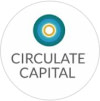
Circulate Capital, an investment management firm, invests in companies that address plastic pollution and advance the circular economy in Southeast Asia. The Ocean Fund provides financing to waste management, recycling and circular economy global technology startups. Their funding includes local small and medium enterprises scaling solutions in India, Indonesia, Thailand, Vietnam and the Philippines.

Over the next five years, Delterra, an environmental nonprofit, plans to tackle plastic pollution in Southeast Asia and Latin America by developing solutions for the emerging circular plastics economy.
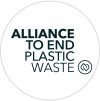
P&G is also a founding member of the Alliance to End Plastic Waste, an organization with over 70 global companies working together to catalyze solution models that are replicable at scale for increasing collection and recycling of plastic waste to prevent it from entering the environment.
We’re working to reduce waste and achieve efficiency in production. In 100+ sites across 35+ countries, we’ve achieved zero manufacturing waste to landfill. We’re working to reduce waste in our innovation centers and general offices with our employees. In fiscal year 2023, we diverted nearly 676,000 metric tons – that’s about 1.49 billion pounds – of manufacturing waste from across the company.
| 2030 Goal | Progress |
|---|---|
| Maintain zero manufacturing waste to landfill | Achieved and maintained since 2020 |
Since 2007, P&G plants around the world have been on a mission to achieve zero manufacturing waste to landfill. In 2017, we set our sights on making this true for 100% of our manufacturing sites and in 2020 we achieved it. Throughout our journey we have been working to reduce material usage in operations, reuse whenever suitable, and find a second life use for all other waste to avoid landfills. Now we are focusing on reducing and eliminating landfill waste in our offices and technical centers.
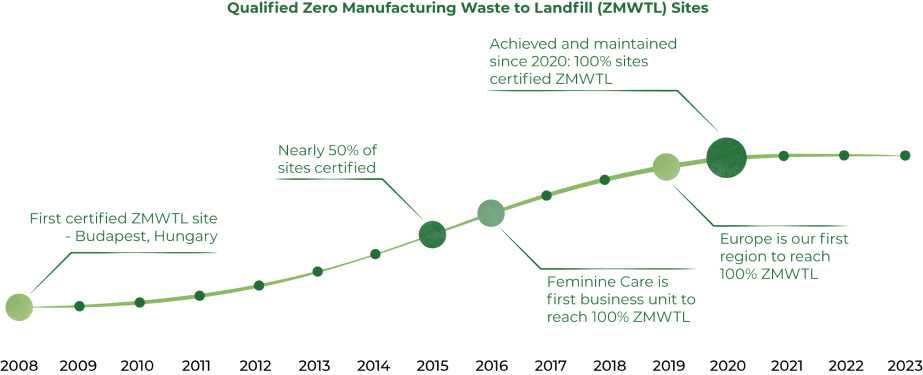
![]() WATER
WATER

How are we contributing to a water positive future? Watch this video.
Water is essential for the making and use of our products. Our comprehensive strategy includes reducing water in our operations, restoring water in 18 water-stressed areas around the world where we operate, and responding to water challenges through innovation and partnerships.
We have set ambitious 2030 targets to make our facilities more water efficient at our manufacturing facilities by 35% per unit of production (compared to a 2010 baseline) and recycling 5 billion liters of water each year.
Changes in production led to a slight decrease in water efficiency compared to last year. We will continue to focus on implementing technologies to eliminate, reduce and/or recycle water in our operations to achieve our 2030 targets.
| 2030 Goal | Progress |
|---|---|
| Increase water efficiency at P&G facilities by 35% per unit of production (vs. 2010 baseline) | 24% increase efficiency per unit of production |
| Recycle and reuse 5 billion liters of water in P&G facilities annually | 3.47 billion liters reused annually |
3.47 billion liters of water reused in 2023 could fill approximately 1,388 Olympic swimming pools
P&G has expanded our water goals from our operations to positively impact a number of water-stressed communities where we operate. We are working with on-the-ground partners who have deep knowledge of the local challenges to amplify and accelerate solutions by supporting long-term projects that improve, manage or protect freshwater resources.
Our progress is only possible through the help of our partners and the implementing organizations across more than 20 water restoration projects for these regions.
| 2030 Goal | Progress |
|---|---|
| Restore more water than is consumed at P&G manufacturing sites in 18 water-stressed areas around the world. This goal focuses on water that evaporates during the manufacturing process or is incorporated into our finished products. | 13% of our goal will be delivered with the current projects. The remaining 87% will come from incremental projects to be identified. |
| Restore more water than is consumed during the use of our products in the water-stressed metropolitan areas of Mexico City and Los Angeles. This goal focuses on water that leaks or evaporates in households during the use of P&G products. |
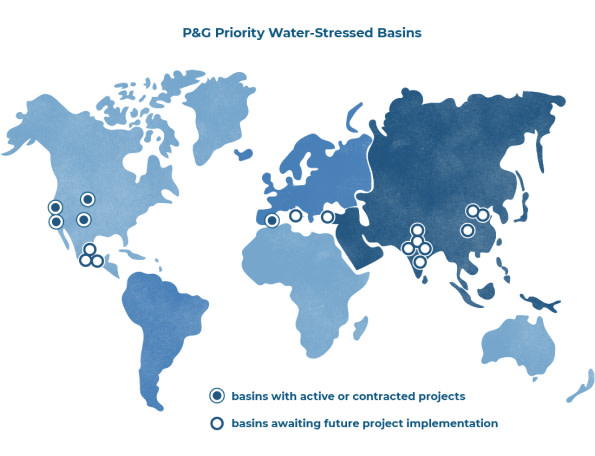
We recognize that water challenges are complex and require collaboration. Through longstanding partnerships, we have brought our experience in innovation and consumer understanding to seek new solutions.

Accelerating Water Innovation at Scale
As founding members of the 50 Liter Home Coalition, a global collaborative of public, private and NGO leaders, we're seeking innovations that will reinvent the future of urban water use.
Through the 50 Liter Home Coalition, we are joining forces with Electrolux Group, IKEA, Kohler Co., and the U.S. Green Building Council – Los Angeles to implement a demonstration pilot in Los Angeles, California. We will work to understand water and energy consumption in 30 homes in the greater Los Angeles region, engage tenants, and retrofit 15 of those homes with products and solutions to drive down water use holistically. This project will help P&G continue to gain insights about our products and how people use water and energy in real-life situations.
The City of Phoenix, Arizona is partnering with the 50 Liter Home Coalition to explore ways to test and accelerate potentially scalable innovations to continue reducing water consumption without affecting quality of life.
Transforming Lives Through the Power of Clean Water
Our Children's Safe Drinking Water (CSDW) Program has worked with more than 150 global advocacy and implementing partners since 2004 to distribute P&G’s Purifier of Water packets to people that lack access to clean drinking water in over 90 countries, delivering 21 billion liters through the end of June 2023.
| 2030 Goal | Progress |
|---|---|
| Provide 25 billion liters of clean drinking water to children and families in need around the world by 2025 through CSDW Program | 21 billion liters of clean water provided through Children’s Safe Drinking Water program |
![]() NATURE
NATURE

Learn how we’re supporting the natural ecosystems that support P&G and beyond.
At P&G, the success of our business is intricately linked to the health and sustainability of the natural environment. We believe it is important to help protect and restore critical ecosystems that help sustain our operations, support the wellbeing of people, and help protect the long-term health of our planet.
We are committed to responsible sourcing of key commodities like wood pulp, palm oil and paper packaging together with respecting human, labor and land tenure rights in our supply chains. We are also going beyond responsible sourcing to help restore and protect landscapes near our existing supply chains and invest in natural climate solutions that can remove and store more carbon.
We recognize we cannot do this alone, which is why we collaborate with our partners to help restore and protect these ecosystems that are critical to people, the planet and P&G.
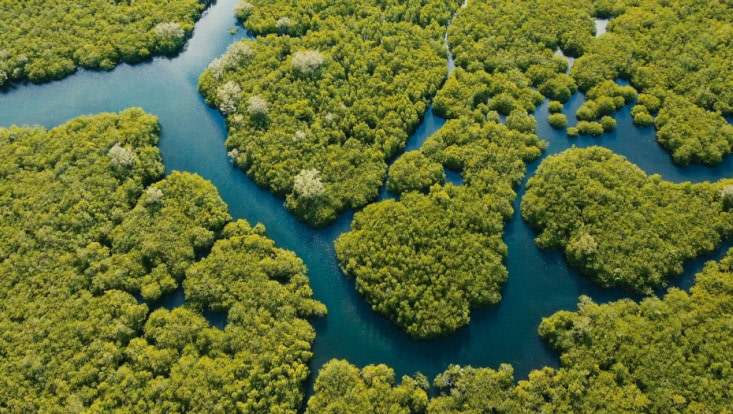
Our journey begins at the origin of our raw materials. We are committed to no deforestation in our wood pulp, paper packaging and palm supply chains, and we are delivering on our responsible sourcing goals. Together with our suppliers and partners, we are working with farmers, landowners, Indigenous peoples and local communities to improve environmental practices and livelihoods in our supply chains.
| 2030 Goal | Progress |
|---|---|
| PALM 100% of palm oils* used in P&G brands is Roundtable on Sustainable Palm Oil (RSPO) certified |
Maintained 100% RSPO certification covering palm oil in our brands |
| PULP 100% wood pulp we source is certified by a globally recognized certification system** |
Maintained 100% third-party certified wood pulp |
| PAPER PACKAGING*** 100% of our paper packaging is either recycled or third-party certified virgin content |
Sourced 97% recycled or third-party certified wood fiber |
| 50% of our virgin paper packaging is FSC™ certified by 2025 | Achieved 75% FSC™ certified virgin paper packaging |
|
*Palm Oil, Palm Oil Derivatives, Palm Kernel Oil, Palm Kernel Oil Derivatives. Membership Number: 4-0113-10-100-00 |
|
For additional details on our wood pulp, palm oil and paper packaging sourcing efforts, please visit the Nature section of our ESG Portal.
For additional details on our commitment to respecting human rights, please visit Respecting Human Rights: Our Approach.
PARTNERING FOR FORESTS
“P&G is committed to keeping forests as forests for generations to come. From more collaborations that have resulted in small landowners certified through the Forest Stewardship Council™ to coalitions to advance responsible forestry, we work to restore forests, protect wildlife and support livelihoods.”
– Chris Reeves, P&G Certified Forester
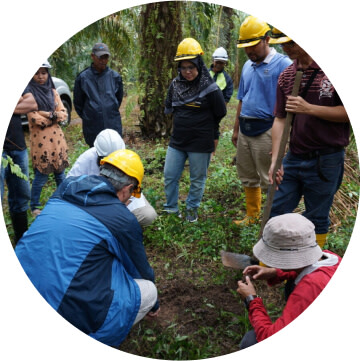
Supporting Smallholder Palm Farmer Livelihoods
We’re continuing to work with palm oil smallholder farmers in Malaysia on their sustainability journey as part of our responsible sourcing efforts We are helping promote sustainable agricultural practices, enabling 100 ambassadors to spread the word on such practices, empowering them to boost yields and income through higher productivity, and supporting them in achieving Roundtable on Sustainable Palm Oil (RSPO) smallholder certification. As of February 2023, 306 smallholder farmers passed the RSPO audit requirement.
“The program has helped smallholders who have gaps in knowledge and understanding. Since I have participated in this program, we have received beneficial information, for example, on Ganoderma, (rhinoceros) beetle and peat soil. There are also sustainability issues that we did not even think of before, but since being part of this program, we have received new inputs and knowledge.”
- N. Jaafar, Johor region, Malaysia
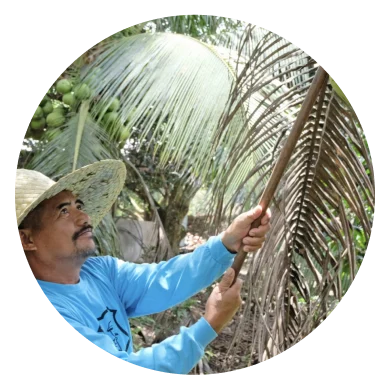
Improving Sustainability Outcomes for Smallholder Coconut Farmers
Coconut farmers owning 1 – 50 hectares of land produce about 95% of harvested coconut around the world. As part of our responsible sourcing efforts, we’re helping farmers in Indonesia and the Philippines improve their yields and incomes by adopting modernized and sustainable cultivation methods. We also joined forces with six other multinational consumer goods companies15 and Germany’s international development ministry (Deutsche Gesellschaft für Internationale Zusammenarbeit GmbH, or GIZ) to improve the production conditions along the coconut oil supply chains in two regions in the Philippines. The Philippine Coconut Authority is working to ensure that achievements can be scaled up and integrated more broadly.
15GIZ other partner companies include Barry Callebaut, Cargill, FrieslandCampina, JDE Peet’s, Nestlé, and Unilever
photocredit © GIZ / Romer Sarmiento

Joining Forces in Industry-Leading Sustainable Guar Effort
Guar is a natural ingredient used in our personal care products like shampoos and lotions. P&G Beauty joined forces with one of our strategic suppliers, Syensqo, in the Sustainable Guar Initiative (SGI) that will positively impact the lives of more than 21,000 people and promote sustainable guar production within the Bikaner district of Rajasthan, India one of the world’s most significant resources for guar.
Since announcing the partnership in April 2022, SGI has achieved the following results:
- Met partnership target of expanding impact to 24 villages, engaging with more than 5,200 farmers and their families.
- Surpassed initial target to train 900 women by training more than 1,600 women in household health and hygienic practices, and nutritional diversity.
- Trained and supported nearly 800 women in setting up kitchen gardens that will give the women and their families the ability to improve their food security, nutrition and livelihoods.
- Renovated the community johad (a local community-owned pond) and expanded its capacity to collect/harvest rainwater from around 2.2 million liters to 3.8 million liters, benefitting about 4,500 people across four villages.
We’ll continue to partner with conservation-oriented organizations, learning from them as we collaborate on projects designed to enable restoration and resilience of our ecosystems.
We are developing a portfolio of projects in partnership with leading conservation organizations that will protect, restore or improve more than 1.5 million acres of land. We are including landscapes in regions near our existing supply chains and in areas considered critical for conservation. In addition, we are advancing Natural Climate Solutions projects to balance any remaining greenhouse gas emissions from our manufacturing operations that are not eliminated by 2030. Projects committed to date get us more than 75% of the way toward our natural climate solution goal.
| 2030 Goal | Progress |
|---|---|
| Advance Natural Climate Solutions and balance our manufacturing emissions we do not eliminate this decade | 78% of our goal is anticipated to be delivered when current project portfolio is fully implemented |
| Protect, restore or improve greater than 1.5 million acres of land | Collaborated with Conservation International to set land targets and identify priority landscapes Project portfolio development is underway, and we expect to report additional progress in the coming years |
We recognize the importance of going beyond responsible sourcing to support natural landscapes’ biodiversity and ecosystems, and the people who rely on them.
Dawn Helping Save Wildlife
For 45 years, Dawn has worked with wildlife rescue experts to protect, care for and clean wildlife after oil spills, assisting hundreds of thousands of aquatic birds and animals across North America through collaboration and product donation to the International Bird Rescue and the Marine Mammal Center.
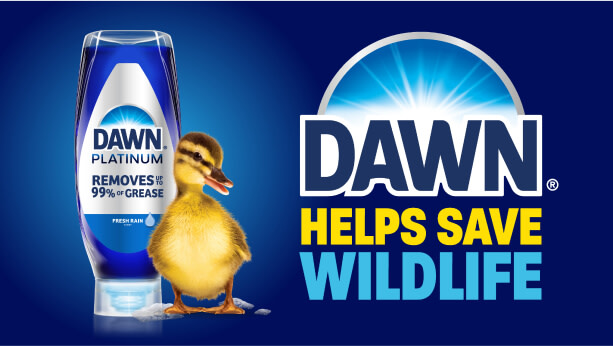
EXPLORE THE REPORT
Learn more about our Citizenship areas and read the top stories from the past year.
Or download the 2023 Citizenship Report PDF
The information in this report covers the period of July 1, 2022 to June 30, 2023, unless noted otherwise. References to “fiscal year,” “FY,” or “2023” in this report refer to P&G’s 2022/2023 fiscal year, which covers the time period of July 1, 2022 to June 30, 2023.
FORWARD-LOOKING STATEMENTS Certain statements in this report, including statements relating to our environmental sustainability, equality and inclusion, and other ESG targets, estimates, projections, goals, commitments, and expected results, and the assumptions upon which those statements are based, are “forward-looking statements” within the meaning of the Private Securities Litigation Reform Act of 1995, Section 27A of the Securities Act of 1933 and Section 21E of the Securities Exchange Act of 1934 and are generally identified by the words “believe,” “expect,” “anticipate,” “intend,” “opportunity,” “plan,” “project,” “will,” “should,” “could,” “would,” “likely” and similar expressions. Forward-looking statements are based on current assumptions that are subject to risks and uncertainties that may cause actual results to differ materially from the forward-looking statements, including the risks and uncertainties discussed in Item 1A — Risk Factors of the Form 10-K included in our 2023 Annual Report and in our most recent 10-Q and 8-K reports. Such forward-looking statements speak only as of the date they are made, and we undertake no obligation to update or revise publicly any forward-looking statements, except as required by law.
